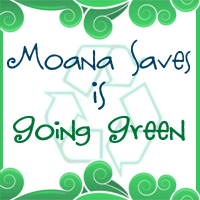Years ago, I made a commitment that I would use recycled paper as much as possible: both in my computer printer and in household paper products such as napkins and toilet paper. These days, it’s easy to find suppliers of both types of paper who manufacture exclusively from recycled paper.
But how exactly is it possible to take old leftover junk mail and turn it into something clean and white and fresh and ready to use again? I went to the perfect source to find out: Marcal, a household paper products company that started using recycled paper all the way back in 1950, before most people currently on the planet (including me) were even born.
How does this pioneering recycler turn this mish-mash of bright colors, staples, plastic envelope windows, etc. into a pure-white soft yet strong paper good enough to use on your bottom, or on your kitchen counter spill? And why did the company go recycled so early, long before it was fashionable?
It’s all done at a sprawling, aged industrial plant in Elmwood Park, New Jersey (just outside of Patterson). Just 13 miles from New York City, Marcal has a steady source of raw materials: thousands of pounds per day of unwanted mail and paper waste, from Manhattan’s hundreds of thousands of offices and other municipalities of all sizes, most located near the plant. This is what’s called “post-consumer” paper: printed, read (or not), and thrown into the recycle bin. Along with the junk mail is another large input: pre-consumer waste, never printed on but unable to be processed as virgin paper. This includes (among other things) paper at the ends of rolls from printing plants (too small to run a big job), and also anything that went through Marcal’s own production but was rejected for whatever reason. (Looking at Marcal’s discards, I personally could not see the quality problems—but I’m no expert, of course).
The pre-consumer paper is already a very bright shade of white, but obviously the stream of post-consumer paper has to be treated. Various large machines separate the paper from staples and glassine, remove the ink, and turn the paper white again with hydrogen peroxide (far less toxic than the chlorine bleach many paper mills use).
The process uses about the same amount of energy as conventional paper making, and less compared to manufacturers that incorporate a technique called through air dried technology. The plant makes lots of noise; I was given earplugs at the start of my tour. However, the amount of energy and water to make virgin paper from trees is much greater, especially if you count in whole-lifecycle costs that are too-often “externalized” out of the equation—which, for papermaking, would include not only the energy and labor involved in cutting trees into logs, milling logs into paper, and transporting the paper vast distances across the country, but also the impact on global warming of removing carbon-sequestering mature trees, and the energy and water costs of replanting new trees to be harvested a few decades from now. Thus, the recycling process is indeed more environmentally beneficial than the traditional approach.
Also, of course, the recycling process removes a lot of paper from the waste stream. This is paper that is not clogging up landfills, and not generating toxins by being burned in an incinerator. It’s being used again to make paper, and it’s also not causing forests to be cut down.
So how is it that Marcal started using recycled paper all the way back in 1950? Senior Marketing VP MJ Jolda told me that the answer was simply that virgin paper was too hard to get in the aftermath of World War II. In fact, the company’s packaging didn’t even mention the recycled factor until the last decade or so—but now, realizing that its long-term commitment to recycling makes it attractive to consumers, it’s built a whole new modern brand, Marcal Small Steps, entirely around the idea of saving trees by using paper goods made from 100 percent recycled paper.
Shel Horowitz, shel at greenandprofitable.com, shows you how to "reach green, socially conscious consumers with marketing that has THEM calling YOU." He writes the Green And Profitable/Green and Practical columns and is the primary author ofGuerrilla Marketing Goes Green (John Wiley & Sons, 2010).

Living on an island can shape our perspective about how our lives impact the planet and either positively or negatively affect sustainability. We're not suggesting that we are green experts. Rather, we are interested in highlighting how we think, shop and spend can evolve so that can sustain the earth's future for our kids. Plus we're looking at some really cool stuff! Stay tuned!




































I really really need to get better at recycling thanks for the inspiration!
ReplyDeleteWhat an interesting story! It's fun to know how some of the big businesses got their start.
ReplyDeleteI heard that some paper mills smell too. Either way, anything that allows us to cut down fewer trees and to take out things from the waste stream is good.
ReplyDelete